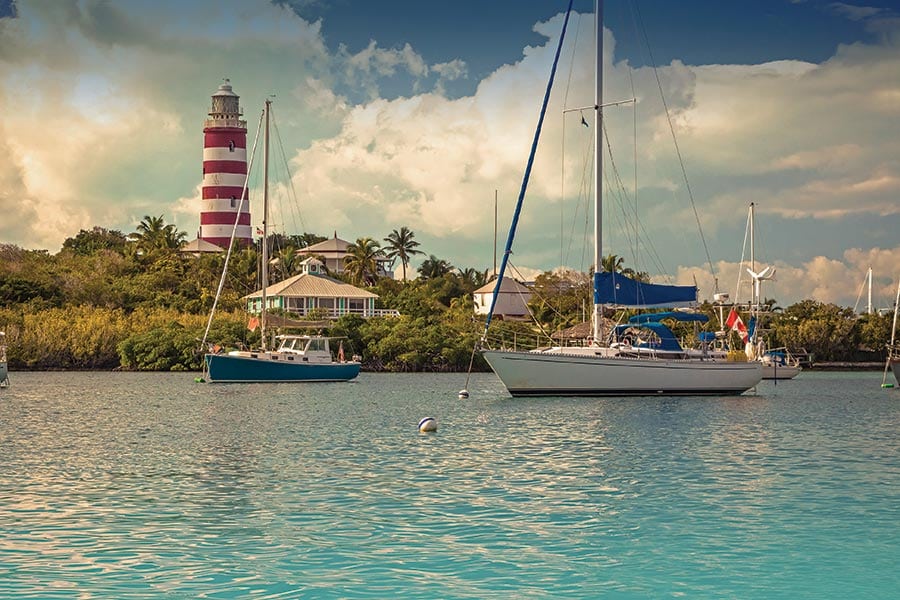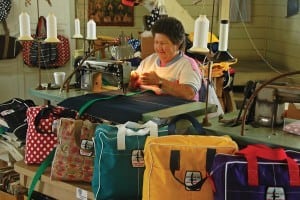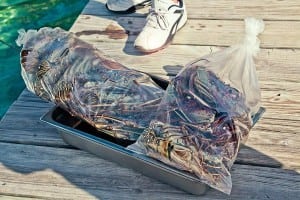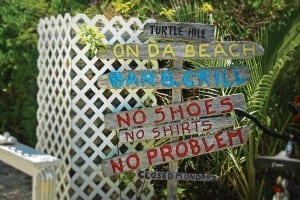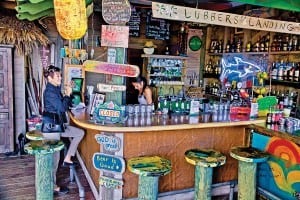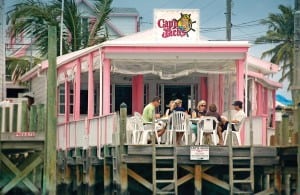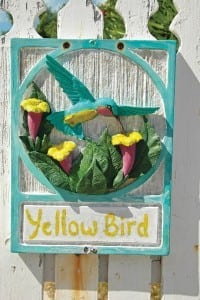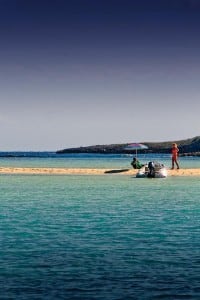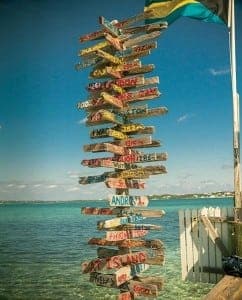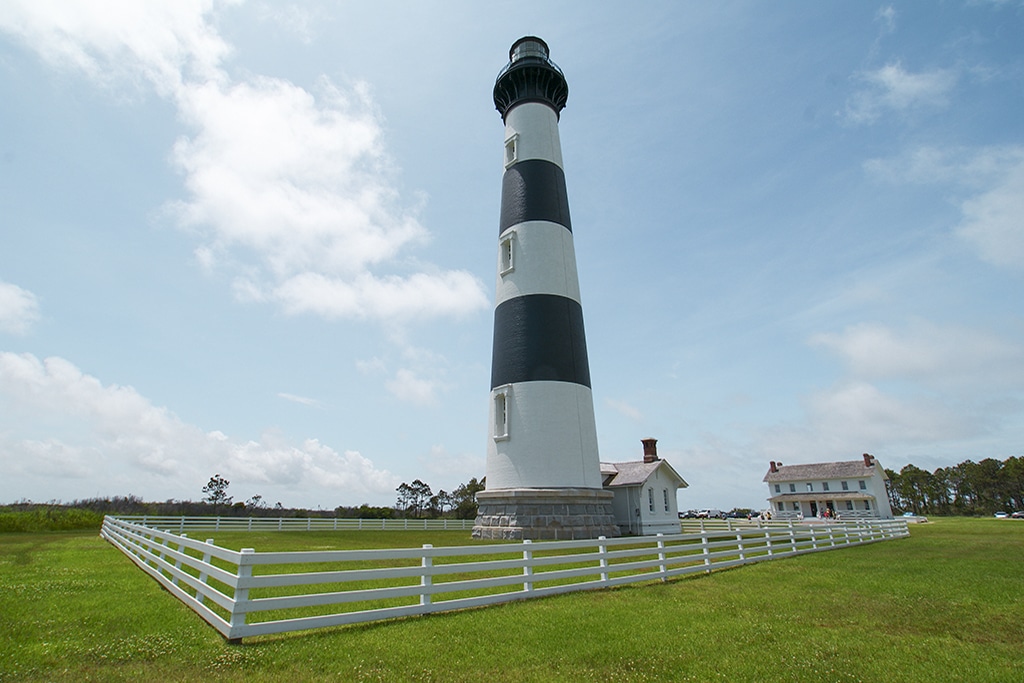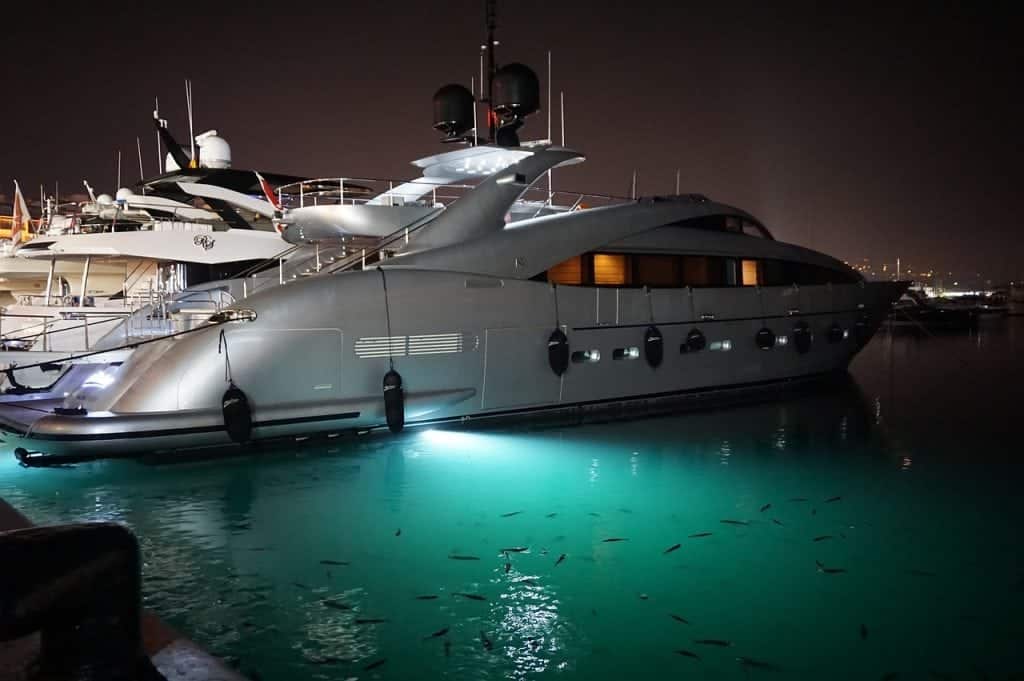A Step Back in Time
Just 135 miles off the coast of Florida, due east of Grand Bahama Island is unsung, oft overlooked Abaco—the northern tip of The Bahamas. The 780-square-mile cruising ground boasts long stretches of unspoiled beach, clear turquoise water, quaint villages, good provisioning, professional marine services, friendly locals, great snorkeling, a wide range of eateries, and predictable 5- to 20-knot trade winds. Little Abaco and Great Abaco Islands—from Crown Haven to Hole in the Wall—form a 120-mile arc that acts as the “mainland” for an outer archipelago of small reef-protected “cays” that dot the Sea of Abaco.
Abaco seems to exist in a time warp. Despite its proximity to the United States, none of the hustle and bustle of the more populated Bahamian Islands has crept northward. That is not an accident. Most Abaconians are aggressively anti-development and determined to preserve this unique and special place. Each of the Abaco islands still has its own distinct persona—many families, descendants of the Loyalists who fled the United States during and after the American Revolution, have called these islands home for well over 200 years. Some of the villages are quaint and charmingly gentrified, others a little less prosperous, but all are well tended with at least one water-view, aboveground cemetery. The surnames on those headstones are the same names on today’s shops, ferries, boatyards, and services.
The jumping-off point for a loop cruise of the Abaco archipelago is centrally located in Marsh Harbour, the third-largest city in The Bahamas. Its protected, deep water has made it the main supply depot for the islands and the home for most of the ferries, yacht charter companies, and a tiny but international airport. The Conch Inn Marina, with pool and restaurant, hosts the Moorings/Sunsail base. Within walking distance, a new Maxwell Supermarket has significantly raised the provisioning bar.
Lubbers Quarters
An easy sail from Marsh Harbour, Lubbers Quarters Cay is a small seven-acre island that is home to funky Cracker P’s beach shack. At the head of a 200-foot dock lined with philosophical “Burma Shave”-style signs, Cracker P’s offers lots to do—from a closet full of board games to the equipment for volleyball, bocce, croquet, horseshoes, badminton, ping-pong, dominoes, and darts. Climb the steps up and over the 40-foot sand dunes to a large sweep of pristine beach, or hike the lush estate amid sapodilla (planted by the original Cracker P), mahogany, tamarind, and mangroves as well as wild orchids, bromeliads and hibiscus.
Little Harbour
The southernmost stop on an Abaco cruise, Little Harbour’s entrance—marked by pairs of red and green “found object” markers—opens into a harbor that’s protected nearly 360 degrees. Famous Pete’s Pub, Gallery and Foundry sits at the head of the harbor and rents moorings, serves casual fare in an open-air palapa, and presides over an atelier. Descendants of sculptor Randolph Johnston continue to cast bronze sculptures using a 5,000-year-old lost-wax process. Visit the Johnston Family Gallery and ask about a tour of the foundry. After a swim off the beach on the harbor’s eastern side, or off the mile-and-a-half stretch of white sand on the ocean side, join the regulars at the bar fashioned from pieces of Langosta, the old sailing vessel that carried the Johnston family to Little Harbour in the early 1950s.
Elbow Cay (Hope Town)
Founded in 1785 by Loyalists, Hope Town’s 120-foot red and white candy-cane lighthouse, protected harbor and picturesque ambience make it the poster child for the Abaco archipelago. Three marinas offer transient dockage on the harbor’s west side. The transplanted New England village is a dinghy ride across the harbor and vaunts lovingly restored, brightly colored structures—house shops, private homes, galleries, and bed-and-breakfasts drip with Bougainvillea and are edged with white picket fences. The narrow sidewalk-like streets are designed for walkers and golf carts, and public entrances lead to a sweep of gorgeous, pink-powder ocean beach protected by a live coral reef just 30 feet offshore. The compelling Wyannie Malone Historical Museum is worth a stop. Its exhibits reveal the history of the village and larger archipelago. Among them are artifacts collected by infamous shipwreckers. Hope Town owes some of its early affluence to a group who enticed boats with false signal lights that led them to founder on the reef; they would then salvage the cargo. The island of Elbow Cay is a quarter-mile wide at its beamiest point and six miles from stem to stern.
Man-O-War Cay
One of the strongholds of Abaco tradition, most of the Man-O-War families are part of the original immigration. They became boat builders and shipwrights, and today Albury Brothers’ “Deep-V” runabouts have a passionate following that extends far beyond The Bahamas. There are several options for parts, boat supplies and repairs: Man-O-War Marina has slips and moorings; Edwin’s Boat Yard offers two full-service facilities boasting an extensive marine parts inventory; Man-O-War Hardware is a gold mine for cruisers. The village has two roads that parallel the harbor so it’s easy to make a long loop and see everything in an hour or so including three eateries and The Sail Shop’s hand-made duffel bags, hats and jackets. Two well-supplied groceries offer everything but alcohol: Man-O-War Cay is a “dry” island.
Great Guana Cay
Famed Nipper’s Beach Bar & Grill put Great Guana Cay on the map. Right on the ocean dunes, it sports picnic tables, chairs and multi-level decks painted every color of the rainbow along with a shallow two-level pool designed mostly for the pool bar. The weekly pig roast is a big attraction accompanied by a powerful orange concoction. Despite Great Guana’s five-mile-wide, untouched ocean beach, the settlement is still delightfully small—a good part of the island wants it to stay that way. Pick up a mooring in Fishers Bay and dinghy ashore, or head over to upscale Orchid Bay Marina and Resort for a pampered experience.
Treasure Cay
One of the few big yacht options in Abaco, the 150-slip Treasure Cay Marina and Hotel houses a pool, 18-hole golf course, restaurants, 100-room hotel, rental villas and condos, and tennis courts. Its gorgeous three-mile arc of powder-sand beach dazzles and is well worth a visit. A popular bar is dockside and a low-key, upmarket restaurant overlooks the pool and harbor. Abaco Ceramics’ studio sells its coveted wares in shops all over The Bahamas.
Green Turtle Cay
The northernmost destination for Abaco-centric cruises is Green Turtle Cay, which requires a short outside passage around Whale Cay. When the ocean is raging, this passage is not recommended; the Cruiser’s Net (Channel 68, at 08:15AM) gives up-to-date weather reports. Green Turtle is home to three harbors: Settlement (small boats only), White Sound and Black Sound. The latter is the closest viable anchorage to the historic village of New Plymouth. A good way to see the whole cay is to join the locals and rent a golf cart. The history of Green Turtle is chronicled in the Albert Lowe Museum and the adjacent Memorial Sculpture Garden. White Sound features the quietly elegant Green Turtle Club and Marina with a pool high above the harbor, cottage accommodations and an old Bahamian-style fine-dining restaurant that serves three meals a day. Across the harbor, Bluff House Yacht Club and Marina’s Ipe (Brazilian teak) docks are filled with big sport-fish boats whose owners enjoy the facility’s two pools, two restaurants and first-class amenities. Cruising the Abacos is viable at most any time of year with the unique culture, gin-clear water and spectacular beaches. But the best weather seems to be March through May; it’s about the same temperature as the Palm Beach area of Florida.
By Beth Adams-Smith, Southern Boating May 2014


